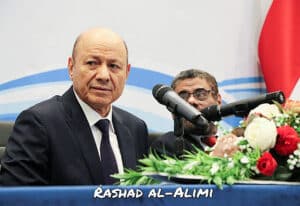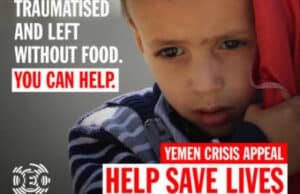by Neville Teller
Over the Christmas period charities in their TV appeals showed pictures of Yemeni babes-in-arms and toddlers with skeletal limbs and lifeless eyes literally dying of starvation.
Yemen remains one of the largest humanitarian crises in the world. After eight years of conflict around 23.4 million people are in need of assistance, including almost 13 million children. By late 2022, Yemen’s already dire hunger crisis was teetering on the brink of outright catastrophe. Around 2.2 million children under the age of 5 were experiencing starvation-induced wasting, more than 500,000 of whom from severe wasting.
From April until October 2022 there had been real hope of an end to the conflict. A truce between the Houthis and the recognized government had been painstakingly put together by UN Special Envoy Hans Grundberg. It was extended twice, resulting in the longest period of stability in Yemen since the start of its civil war in 2014. On October 2 that possibility was extinguished, when the Houthis refused to renew it.
The truce was always a fragile arrangement, and by the time the current extension came to an end, the situation had become too unstable to sustain another. Violations of the ceasefire were on the increase, talks aimed at reopening local roads had stalled, and there was no agreement on how to meet the salaries of public employees, many of whom had not been properly compensated for years. In the hours leading up to the deadline, Houthi military spokesman, Yahya Saree, threatened private oil companies still working in the country with seizure of their facilities if they did not leave, later tweeting that the fossil fuels belong to the people of Yemen and could be used to pay public servants’ salaries.
On October 2, the UN formally announced that the truce had not been renewed.
There are two main obstacles in the way of a permanent peaceful settlement in Yemen: the Houthis, supported by sophisticated Iranian weaponry, are feeling increasingly empowered, and the coalition fighting them is riven by internal conflict.
It was in the early days of the truce that Yemen’s interim president, Abd-Rabbu Mansour Hadi, transferred his powers to an eight-member Presidential Leadership Council, which was sworn in on April 17. The Council is led by Rashad Al-Alimi, who was accorded wide-ranging powers, and includes Aidrous al-Zubaidi, the head of the separatist Southern Transitional Council. This arrangement amalgamates the anti-Houthi coalition, but at the same time consolidates the split in it. 
On October 13, with the ceasefire at an end, Grundberg reported back to the UN Security Council. He explained that since the end of the truce he had continued his “relentless efforts to engage the parties, as well as regional and international partners, on options for the renewal of the truce. I personally believe,” he said, “that there is still a possibility for the parties to come to an agreement.”
Given current circumstances, that possibility seems remote. Yemen has been plunged into a new uncertainty and a heightened risk of war. Houthi military spokesman, Yahya Saree, is reported as saying the group is ready for another round of fighting, and civilian deaths and injuries from sniper attacks and shelling have continued.
On October 21 Yemen’s government said its forces had intercepted armed Iranian drones, launched by the Houthi militia at the oil tanker Nissos as it prepared to dock at the al-Dubba oil terminal. Nissos was scheduled to load 2 million barrels of crude oil. In the event, the drones were intercepted in flight, and neither terminal nor tanker was damaged.
The Houthi movement, which controls a large segment of western Yemen, described the attack both as a warning, and as designed to prevent the vessel from “smuggling” crude oil from the port. A Houthi-issued statement warned all oil companies “to comply fully with the decisions of the authorities in Sanaa and avoid contributing to the looting of Yemeni resources.” Sanaa is Yemen’s capital, seized by the Houthis in 2014, and held by them ever since.
A few days later the UN told the media: “The members of the Security Council strongly condemned the Houthi terrorist drone attacks on 21 October…as a serious threat to the peace process and stability of Yemen… and called on the Houthis to immediately cease such attacks…and engage constructively with the efforts to renew the truce. They reiterated their support for UN Special Envoy Hans Grundberg in his efforts towards a negotiated, inclusive and Yemeni-led political settlement.”
. The six months of the truce, from April to October 2022, now appears to have been a brief breathing space in the midst of an unending conflict whose main victims are the hapless people of Yemen. While Iran continues to supply weapons of ever-increasing sophistication, and the Houthis believe they have a chance of overthrowing the government and taking over the whole of Yemen, pleas to them to negotiate another ceasefire seem doomed to fall on deaf ears. Meanwhile Yemen’s hopes of a peaceful future recede into the far distance.

